Cars
What are Daytime Running Lights and Why Are They Necessary?

Daytime Running Lights (DRLs) enhance vehicle visibility during daylight hours. Unlike headlights, DRLs make the vehicle more conspicuous to others, reducing accidents in low-light conditions like dawn, dusk, or adverse weather. Using energy-efficient LED technology, DRLs activate automatically with the ignition and require no driver intervention. As global regulations mandate their use, understanding DRLs’ benefits highlights their importance in automotive safety.
Understanding Daytime Running Lights (DRLs)
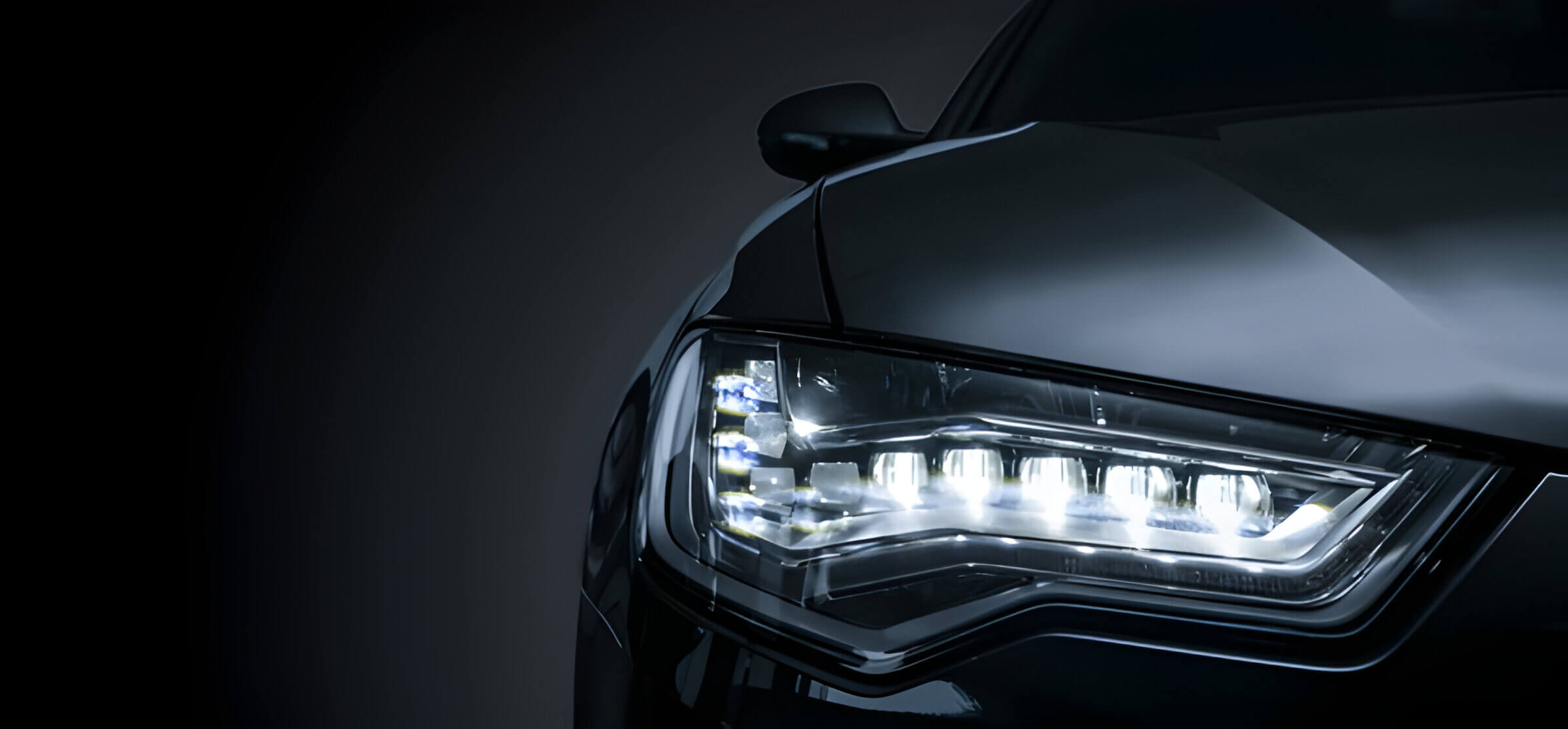
Daytime Running Lights (DRLs) are a crucial car safety feature designed to enhance vehicle visibility during daylight hours. These lights, typically positioned at the front of a vehicle, automatically illuminate when the engine is started. Unlike traditional headlights, DRLs operate at a lower intensity and are not intended to illuminate the road ahead but rather to make the vehicle more noticeable to other drivers and pedestrians.
What Are DRLs?
Daytime Running Lights are part of modern vehicle lighting systems aimed at reducing daytime accidents by increasing the conspicuity of vehicles. They differ from other lighting components such as headlights, taillights, and fog lights in their primary function: visibility enhancement rather than road illumination.
Car Safety Features
The inclusion of DRLs in automotive design is supported by various studies indicating that vehicles equipped with these lights have lower accident rates compared to those without them. By making cars more visible during daylight hours, DRLs contribute significantly to overall road safety.
Vehicle Lighting Systems
Modern vehicle lighting systems are increasingly sophisticated, integrating multiple light sources for different functions including navigation and safety. DRLs represent an essential component of these systems, ensuring that vehicles remain visible under various driving conditions without requiring manual operation from the driver.
Understanding daytime running lights involves recognizing their role in enhancing daytime visibility and contributing to safer driving experiences. As automotive technology continues to evolve, features like DRLs will remain integral in promoting road safety and preventing accidents.
The Purpose of Daytime Running Lights
Daytime Running Lights (DRLs) have become a crucial feature in modern vehicles, primarily aimed at enhancing visibility on the road. The importance of DRLs cannot be overstated when it comes to ensuring that vehicles are easily seen by other drivers, pedestrians, and cyclists during daylight hours. By automatically illuminating when the vehicle is in operation, DRLs significantly improve the chances of being noticed, thereby reducing the likelihood of accidents.
One of the key safety benefits of daytime running lights is their ability to reduce collisions in various driving conditions. Studies have shown that vehicles equipped with DRLs are less likely to be involved in head-on and intersection crashes. This reduction in accidents can be attributed to the increased visibility that DRLs provide, making it easier for other road users to judge distances and react appropriately.
In addition to improving safety for individual drivers, DRLs contribute to overall road safety by creating a more predictable driving environment. When all vehicles on the road are more visible, especially during dawn or dusk when natural light levels are low but headlights may not yet be turned on, there is a collective enhancement in roadway awareness and response times.
Daytime running lights play a vital role in promoting safer driving conditions by enhancing vehicle visibility and reducing accidents. As awareness of their benefits continues to grow, so too does their adoption as a standard feature in automotive design.
How Do Daytime Running Lights Work?
Daytime Running Lights (DRLs) are an essential component of modern vehicle lighting technology, designed to enhance visibility during daylight hours. The functionality of DRLs is straightforward yet highly effective. They automatically illuminate when the vehicle’s engine is started, providing a consistent light source that makes the vehicle more noticeable to other drivers and pedestrians.
To understand how DRLs operate, it’s important to delve into their mechanism. Unlike traditional headlights that require manual activation and are primarily used during low-light conditions, DRLs are integrated into the vehicle’s electrical system in such a way that they turn on automatically without driver intervention. This automatic feature ensures that the lights are always on when needed, reducing the risk of accidents caused by poor visibility.
The daytime headlights mechanism typically involves lower intensity lights compared to regular headlights. This design choice helps in conserving energy while still maintaining sufficient brightness for visibility. Some advanced DRL systems even adjust their brightness based on ambient light conditions, further optimizing their effectiveness and energy efficiency.
DRLs play a crucial role in vehicle safety by ensuring consistent visibility throughout the day. Their automatic operation and integration with modern vehicle lighting technology make them a valuable feature for enhancing road safety.
Global Regulations and Standards for Daytime Running Lights
Daytime Running Lights (DRLs) have become an essential safety feature in modern vehicles, and their use is governed by various regulations and standards worldwide. Understanding these regulations can help ensure compliance and enhance road safety.
Different countries have specific requirements for DRLs. For instance, in the European Union, DRLs became mandatory for all new cars and small delivery vans starting from February 2011, with larger vehicles following suit in August 2012. The EU regulation stipulates that DRLs must automatically switch on when the engine starts and switch off when the main headlights are activated.
In North America, however, the approach varies between Canada and the United States. Canada has mandated DRLs since 1990 as a means to improve vehicle visibility during daylight hours. Conversely, while not mandatory across all states in the U.S., many American car manufacturers include them as a standard or optional feature to meet consumer demand.
International standards for DRLs are also set by organizations such as the United Nations Economic Commission for Europe (UNECE). UNECE Regulation 87 outlines specifications regarding light intensity, color (typically white), and positioning on vehicles to ensure uniformity across member nations.
Legal requirements for daytime running lights aim to reduce accidents by increasing vehicle visibility during daylight hours. As automotive technology evolves, staying informed about these global regulations helps manufacturers design compliant vehicles while promoting safer driving conditions worldwide.
The Pros and Cons of Using Daytime Running Lights
Daytime Running Lights (DRLs) have become a common feature in modern vehicles, designed to enhance visibility and safety. However, like any technology, DRLs come with their own set of advantages and disadvantages. Here’s a detailed pros and cons analysis for DRLs.
Advantages of DRLs
1. Enhanced Visibility: One of the primary advantages of DRLs is improved vehicle visibility during the day. This helps other drivers, pedestrians, and cyclists see your vehicle more easily, potentially reducing the risk of collisions.
2. Safety Benefits: Studies have shown that vehicles equipped with DRLs are less likely to be involved in daytime accidents. The increased visibility can lead to quicker reaction times from other road users.
3. Automatic Activation: Most modern DRL systems activate automatically when the vehicle is started, ensuring that drivers don’t forget to turn on their lights in low-light conditions such as fog or rain.
Disadvantages of Daytime Running Lights
1. Increased Fuel Consumption: Although the impact is minimal, running lights do consume additional power from the vehicle’s electrical system, which can lead to a slight increase in fuel consumption over time.
2. Potential Glare: In some cases, especially if not properly aligned or if using overly bright bulbs, DRLs can cause glare for other drivers on the road.
3. Battery Drainage: If there are issues with the electrical system or if a vehicle remains idle for extended periods with DRLs on (in manual systems), it could potentially drain the battery faster than usual.
In summary, while there are clear safety benefits associated with using Daytime Running Lights due to enhanced visibility and automatic activation features, they also come with minor drawbacks such as increased fuel consumption and potential glare issues. It’s essential for drivers to weigh these pros and cons when considering vehicles equipped with DRL technology.

Cars
Better Normal or Touchless Car Wash- Which is Right for Your Vehicle?
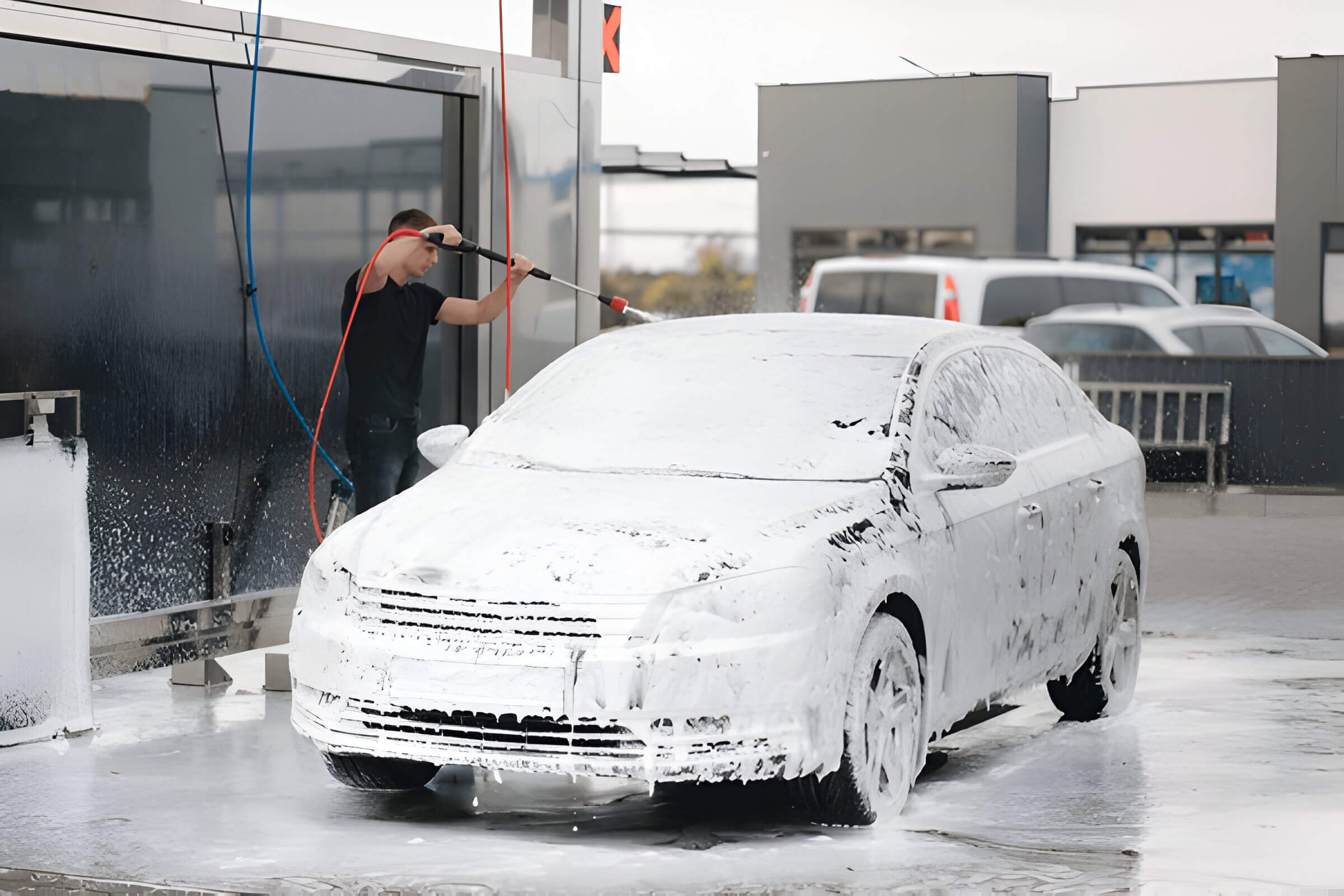
Choosing the right car wash method for your vehicle can be a daunting task with so many options available. From traditional methods to advanced touchless technology, understanding the differences and benefits of each can help you make an informed decision.
What is a Normal Car Wash and How Does it Work?
A normal car wash typically refers to the traditional methods of cleaning vehicles, which can be divided into two main categories: manual car washes and automated car washes.
In a manual car wash, also known as hand washing cars, the process involves human effort and attention to detail. This method usually starts with rinsing the vehicle to remove loose dirt and debris. Then, using specialized car wash soap and water, a technician or the vehicle owner will scrub the exterior surfaces with sponges or mitts. Particular attention is given to areas that accumulate grime such as wheel wells and bumpers. After scrubbing, the vehicle is rinsed again to remove soap residue and then dried with microfiber towels or air blowers.
On the other hand, an automated car wash employs machinery equipped with automated brushes to clean vehicles efficiently. In this setup, cars are driven onto a conveyor belt system that moves them through various stages of cleaning. The process begins with a pre-soak phase where water mixed with cleaning agents is sprayed onto the vehicle’s surface. Next, rotating brushes made of soft materials scrub down all sides of the car while high-pressure jets rinse off any remaining dirt and soap. Finally, powerful dryers blow away excess water for a streak-free finish.
Both traditional manual car washes and automated brush systems have their own sets of advantages. Manual washing allows for more meticulous care and attention to intricate details while automated systems offer speed and convenience without sacrificing thoroughness in cleaning.
Understanding these methods helps in choosing the right type of service based on your needs—whether it’s detailed hand washing for special care or quick yet effective cleaning through automated brushes.
The Advantages and Disadvantages of Normal Car Washes
When it comes to maintaining the cleanliness and appearance of your vehicle, normal car washes—often referred to as manual or traditional car washes (present a range of benefits and drawbacks). Understanding these can help you make an informed decision about how best to care for your car.
Advantages of Normal Car Washes
- Thorough Cleaning: One of the primary benefits of a normal car wash is the ability to achieve a thorough clean. Manual washing allows for attention to detail that automated systems may miss, ensuring every nook and cranny is spotless.
- Personalized Care: With manual washing, you can tailor the cleaning process according to your vehicle’s specific needs. Whether it’s focusing on tough stains or giving extra care to delicate areas, personalized attention can enhance the overall result.
- Cost-Effective: Traditional car washes often come at a lower cost compared to high-tech touchless alternatives. This makes them an attractive option for budget-conscious individuals who still want their cars looking great.
- Flexibility in Products Used: When washing manually, you have control over the types of cleaning products used on your vehicle. This allows for more environmentally friendly choices or specialized products that suit your car’s finish.
Disadvantages of Normal Car Washes
- Time-Consuming: One significant drawback is the time required for a thorough manual wash. Unlike automated systems that complete the job quickly, traditional washing can take considerable time and effort.
- Potential for Human Error: While personalized care is an advantage, it also opens up possibilities for human error such as missed spots or improper techniques that could damage the vehicle’s paintwork.
- Physical Effort Required: Manual washing involves physical labor which might not be feasible or desirable for everyone, especially those with physical limitations or busy schedules.
- Water Usage Concerns: Traditional car washes typically consume more water compared to modern touchless systems designed with water conservation in mind.
Traditional vs Touchless Wash Comparison
In comparing traditional manual washes with touchless alternatives, it’s clear that each method has its own set of pros and cons depending on what aspects are most important to you whether its cost-effectiveness, level of detail in cleaning, time investment, or environmental impact.
By weighing these factors carefully, you can choose a method that best suits your needs while keeping your vehicle in pristine condition year-round.
An Overview of Touchless Car Wash Technology
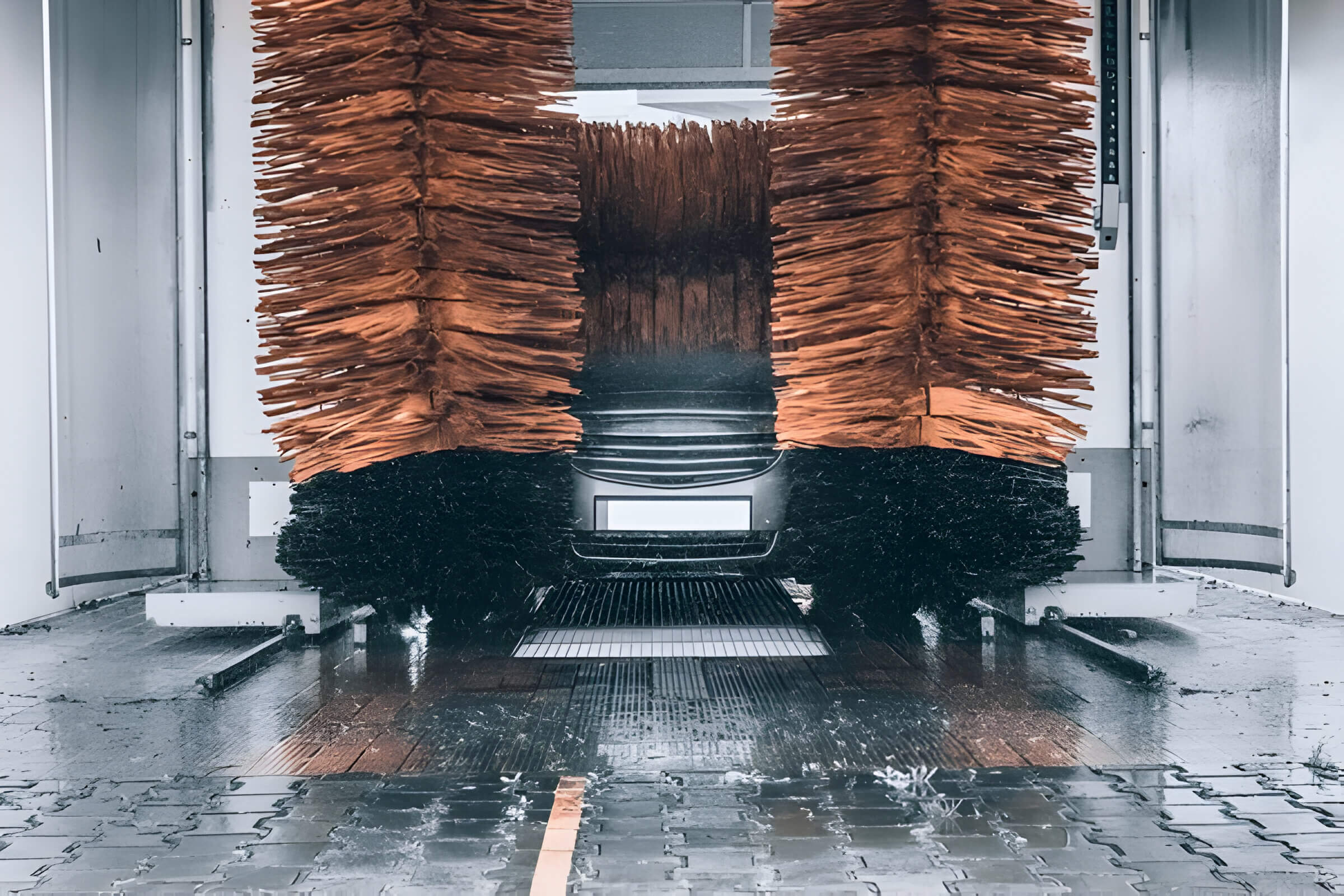
Touchless car wash technology has revolutionized the way we clean our vehicles, offering a more efficient and damage-free alternative to traditional methods. Touch-free car wash systems, also known as no-touch auto washes, utilize high-pressure water jets and specialized cleaning agents to remove dirt and grime without any physical contact with the vehicle’s surface. This modern car cleaning technique ensures that your car’s paintwork remains pristine by eliminating the risk of scratches and swirl marks often caused by brushes or cloths.
One of the main advantages of touchless car wash systems is their ability to provide a thorough clean while being gentle on your vehicle. These systems are designed to target every nook and cranny, ensuring that even hard-to-reach areas receive attention. Additionally, touch-free washes are typically faster than traditional methods, making them an ideal choice for busy individuals who need a quick yet effective cleaning solution.
Moreover, advancements in technology have led to the development of eco-friendly touchless car wash solutions that minimize water usage and reduce chemical runoff. This not only benefits the environment but also aligns with increasing consumer demand for sustainable practices in everyday activities.
Touchless car wash technology offers a state-of-the-art approach to vehicle maintenance by combining efficiency, safety, and environmental consciousness. As modern car cleaning techniques continue to evolve, touch-free systems are set to become a staple in automotive care routines worldwide.
The Pros and Cons of Touchless Car Washes
Touchless car washes have gained popularity in recent years, offering a convenient and efficient way to clean vehicles without the need for physical contact. However, like any service, they come with their own set of advantages and disadvantages. Here’s a closer look at the pros and cons of touchless car washes.
Pros of Touchless Car Washes
- Gentle on Paintwork: One of the major touchless auto cleaner benefits is that they are gentle on your vehicle’s paintwork. Since there are no brushes or cloths involved, there’s less risk of scratches or swirl marks.
- Convenience: Touch-free washes are typically quicker than traditional car washes. This makes them an excellent option for those who need a speedy clean without sacrificing quality.
- Reduced Risk of Damage: With no physical contact involved, there’s a lower risk of damage to antennas, mirrors, or other protruding parts of your vehicle.
- Eco-Friendly Options: Many modern touchless systems use less water and can incorporate eco-friendly cleaning solutions, making them a greener choice compared to some traditional methods.
Cons of Touchless Car Washes
- Effectiveness on Heavy Dirt: One significant disadvantage is that touch-free washes may not be as effective at removing heavy dirt or grime compared to brush-based systems. Stubborn stains might require additional manual cleaning.
- Chemical Use: To compensate for the lack of physical scrubbing, stronger chemicals might be used in touchless systems. This could potentially lead to concerns about environmental impact and long-term effects on vehicle surfaces if not properly managed.
- Higher Costs: Due to advanced technology and specialized chemicals used in these systems, touch-free washes can sometimes be more expensive than traditional options.
- Limited Availability: While growing in popularity, touch-free wash facilities may still not be as widely available as conventional car wash services.
In summary, while touchless car washes offer several appealing benefits such as being gentle on paintwork and providing convenience, they also come with drawbacks like potential ineffectiveness against heavy dirt and higher costs due to advanced technology usage. When choosing between different types of car wash services, it’s essential to weigh these pros and cons based on your specific needs and preferences.
Comparing Costs (Better Normal vs Touchless Car Washes)
When it comes to maintaining the cleanliness of your vehicle, understanding the cost implications of different car wash methods is essential. This article delves into a detailed car washing cost analysis to help you make an informed decision between better normal and touchless car washes.
Normal car washes typically involve manual labor or semi-automated systems that use brushes and cloths to scrub your vehicle. The price for these services can vary widely depending on the level of detail and additional treatments like waxing or undercarriage cleaning. On average, a standard normal wash might cost between $10 to $30 per visit. While this method is effective at removing dirt and grime, it does come with some risks such as potential scratches from the brushes.
On the other hand, touchless car washes rely on high-pressure water jets and specialized detergents to clean your vehicle without any physical contact. This method significantly reduces the risk of damage but may not be as thorough in removing stubborn dirt compared to a normal wash. Touchless car washes generally range from $8 to $20 per visit, making them a more economical vehicle cleaning option for those concerned about minimizing wear and tear.
When conducting a price comparison between normal vs touchless washes, it’s clear that both have their pros and cons in terms of effectiveness and cost. For budget-conscious individuals seeking economical vehicle cleaning options with minimal risk of damage, touchless car washes present an attractive alternative. However, if you prefer a more thorough clean with additional detailing services available, investing in a better normal wash might be worth the extra expense.
The Environmental Impact (Which Option is Greener?)
When it comes to maintaining the cleanliness of your vehicle, it’s essential to consider the environmental impact of different washing methods. Sustainable car washing practices are not only beneficial for your vehicle but also for our planet. Eco-friendly vehicle cleaning methods can significantly reduce water consumption and minimize harmful chemical runoff.
Traditional car washes often use a substantial amount of water and harsh detergents that can harm aquatic ecosystems when they enter storm drains. On the other hand, touch-free washes typically use high-pressure water jets and biodegradable soaps, which are less damaging to the environment. However, they still consume a considerable amount of water.
Comparatively, eco-friendly hand-washing techniques involve using minimal water and environmentally safe products. For instance, using a bucket with a grit guard reduces water usage while preventing dirt from scratching your car’s surface. Additionally, opting for biodegradable soaps ensures that no harmful chemicals seep into the groundwater.
While both normal and touch-free washes have their pros and cons concerning environmental effects, adopting sustainable car washing practices like eco-friendly hand-washing methods can make a significant difference in reducing our ecological footprint. By making informed choices about how we clean our vehicles, we contribute positively to environmental conservation efforts.
User Experience (What Do Drivers Prefer?)
When it comes to user experience in car washes, understanding driver preferences is crucial. Customer reviews of both normal and touchless washes provide valuable insights into what motorists value most. Many drivers appreciate the thoroughness of traditional car washes, where brushes and cloths physically scrub the vehicle. These types of washes often receive high marks for their ability to remove stubborn dirt and grime effectively.
On the other hand, touchless washes have become a popular choice among motorists who are concerned about potential scratches or damage to their vehicles’ paintwork. Touchless systems use high-pressure water jets and specialized cleaning agents to achieve a clean finish without physical contact. Driver satisfaction surveys indicate that while some drivers are skeptical about the effectiveness of touchless options, many appreciate the peace of mind they offer.
Both normal and touchless car washes have their own sets of loyal customers. By analyzing driver satisfaction surveys and customer reviews, businesses can better tailor their services to meet the diverse needs and preferences of their clientele.
Making the Best Choice for Your Vehicle
When it comes to making the best choice for your vehicle’s cleanliness, understanding the differences between normal and touch-free auto washing is crucial. Both methods have their own set of advantages and considerations, tailored to meet various needs and preferences.
Normal car washes, often referred to as traditional or brush washes, use rotating brushes or cloth strips combined with water and detergent to scrub the vehicle’s surface. This method is highly effective at removing stubborn dirt and grime due to its mechanical action. However, there is a potential risk of minor scratches or swirl marks if the equipment isn’t properly maintained.
On the other hand, touch-free car washes rely solely on high-pressure water jets and strong detergents to clean your vehicle. This method eliminates any physical contact with the car’s surface, thereby reducing the risk of scratches or paint damage. However, touch-free washes might not always be as thorough in removing heavy dirt or contaminants compared to their brush-based counterparts.
In conclusion, choosing between normal and touch-free auto washing largely depends on your specific needs and concerns. If you prioritize a thorough clean and are less worried about potential minor abrasions, a normal wash might be more suitable. Conversely, if preserving your vehicle’s finish is paramount but you’re willing to compromise slightly on cleaning power, a touch-free wash could be the better option. Ultimately, understanding these nuances will help you make an informed decision that best suits your vehicle care routine.
Cars
How Long Does a Car Battery Last? Signs to Watch For and Maintenance Tips
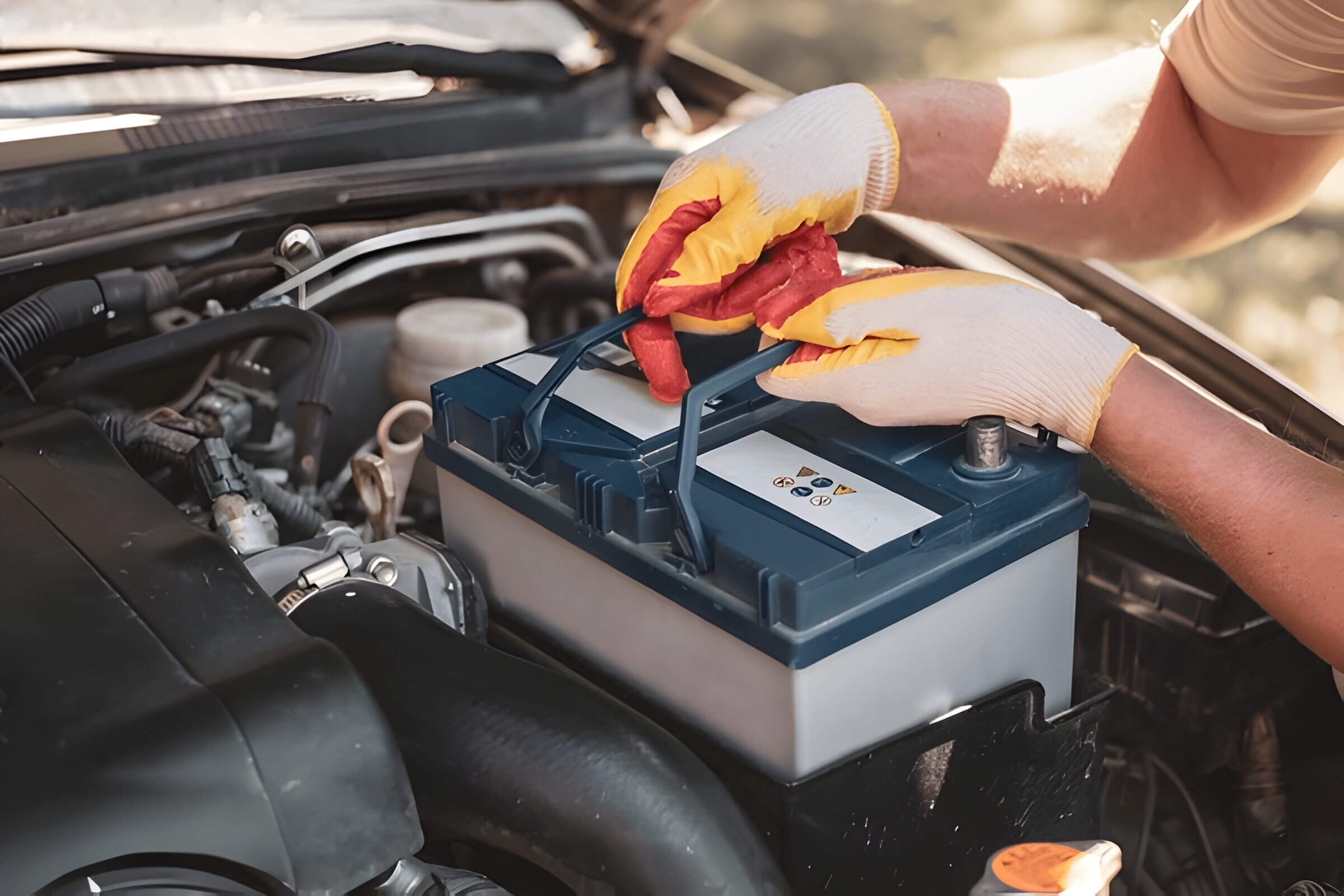
A car battery provides the power to start the engine and run electrical systems. Typically lasting three to five years, its lifespan can vary based on several factors. Recognizing signs of a failing battery can prevent breakdowns. This guide covers what affects battery life, how to identify failure signs, test its health at home, and tips for maintenance to extend its life, ensuring your vehicle remains reliable on the road.
Factors That Affect Car Battery Life
Understanding the factors that affect car battery life is crucial for ensuring your vehicle remains reliable and efficient. Several elements can influence how long a car battery lasts, and being aware of these can help you take better care of your vehicle.
Firstly, environmental impact on car batteries plays a significant role. Extreme temperatures, both hot and cold, can shorten the lifespan of a battery. High heat accelerates the chemical reaction inside the battery, which can lead to overcharging and reduced capacity. Conversely, cold weather can slow down these reactions, making it harder for the battery to provide sufficient power.
Driving habits also have a considerable effect on battery health. Frequent short trips prevent the battery from fully charging, while long periods of inactivity can cause it to discharge completely. Both scenarios contribute to what shortens car battery life significantly.
Moreover, other factors affecting car battery life include poor maintenance practices such as not checking electrolyte levels or failing to clean corrosion from terminals regularly. Ensuring that your vehicle’s electrical system is in good condition and avoiding unnecessary strain on the battery by turning off lights and electronics when not needed are also essential steps in prolonging its life.
By understanding these factors and adjusting your habits accordingly, you can help extend the lifespan of your car’s battery and maintain its performance over time.
Common Signs Your Car Battery is Failing
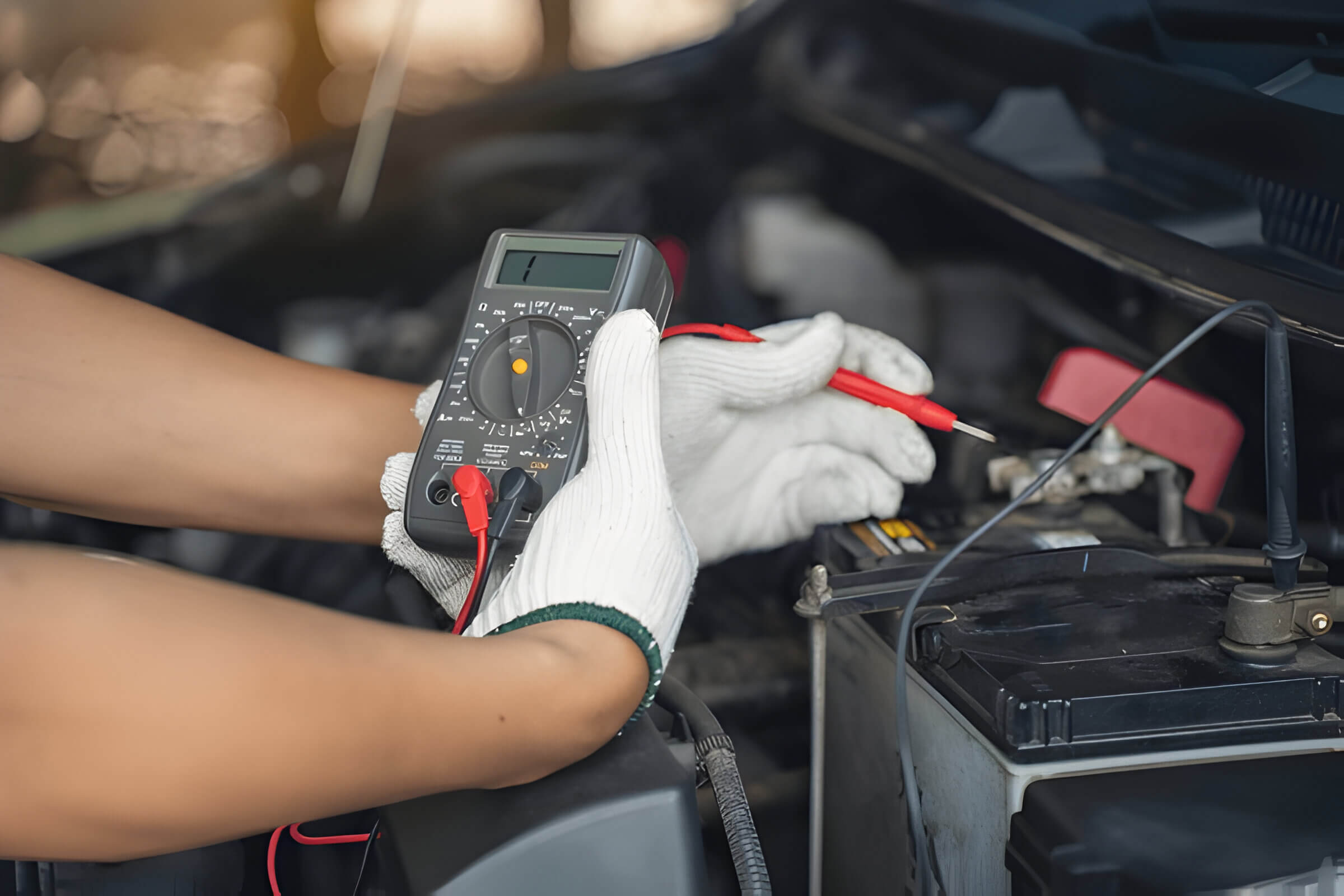
A failing car battery can be a major inconvenience and even leave you stranded if not addressed promptly. Recognizing the car battery warning signs early can save you from unexpected breakdowns and costly repairs. Here are some common indicators that your car battery may be on its last legs:
1. Slow Engine Crank: One of the most noticeable weak car battery symptoms is a slow engine crank. If your engine takes longer than usual to start or sounds sluggish when you turn the key, it could be a sign of a dying car battery.
2. Dim Headlights: Dimming headlights are another clear failing car battery indicator. When your headlights appear less bright than usual, it suggests that the battery is struggling to supply adequate power.
3. Dashboard Warning Light: Most modern vehicles come equipped with dashboard warning lights that alert you to potential issues. If you see a battery-shaped warning light, it’s time to have your vehicle’s electrical system checked.
4. Electrical Issues: A weak or failing battery can cause various electrical problems in your vehicle, such as malfunctioning power windows, radio, or interior lights.
5. Frequent Jump-Starts Needed: If you find yourself needing frequent jump-starts to get your car running, this is one of the most obvious signs of a dying car battery.
6. Swollen Battery Case: A swollen or bloated-looking battery case can indicate that the internal chemical reactions are not occurring correctly due to overcharging or extreme temperatures.
7. Unpleasant Odor: A leaking or damaged battery may emit an unpleasant rotten egg smell due to sulfuric acid leakage, which is another clear sign that it needs immediate attention.
Being aware of these common signs can help you take proactive steps in maintaining your vehicle’s health and avoiding unexpected failures on the road.
How to Test Your Car Battery’s Health at Home
Testing your car battery’s health at home is a straightforward process that can save you time and money. A DIY car battery check requires only a few tools, with a multimeter being the most essential. Here’s how you can test your car battery with a multimeter:
1. Safety First: Before starting, ensure your car is turned off and parked in a safe location. Wear protective gloves and eyewear to safeguard against any accidental spills or sparks.
2. Set Up the Multimeter: Adjust your multimeter to measure voltage (V). For most car batteries, you’ll set it to 20 volts DC.
3. Connect the Multimeter: Attach the red probe to the positive terminal of the battery and the black probe to the negative terminal. Make sure both connections are secure for an accurate reading.
4. Read the Voltage: A healthy car battery should read between 12.4 and 12.7 volts when fully charged and not under load (car turned off). If your reading is below this range, it may indicate that your battery needs charging or replacing.
5. Load Testing: To further assess your battery’s health, perform a load test by turning on headlights or other electrical components for about two minutes before taking another voltage reading with the multimeter still connected.
By following these simple steps for testing your car battery at home, you can ensure that it’s in good condition or identify when it might be time for a replacement—keeping you safe on the road without unnecessary trips to auto shops.
The Importance of Regular Car Battery Maintenance and Care Tips
Maintaining your car battery is crucial for ensuring the reliability and longevity of your vehicle’s electrical system. Regular car battery maintenance can prevent unexpected breakdowns and extend the life of your battery, saving you both time and money. Here are some essential car battery maintenance tips to keep in mind.
Firstly, always ensure that your battery terminals are clean and free from corrosion. Corrosion can impede the flow of electricity and reduce the efficiency of your battery. You can clean the terminals with a mixture of baking soda and water using a wire brush to scrub away any buildup.
Secondly, check the electrolyte levels in your battery if it is not a sealed unit. Low electrolyte levels can lead to reduced performance or even damage to the internal components of the battery. If necessary, top up with distilled water to maintain optimal levels.
Another important tip for prolonging car battery life is to regularly inspect for any signs of wear or damage on cables and connections. Loose or frayed cables can cause poor electrical connections, leading to starting problems or other electrical issues.
Additionally, avoid short trips whenever possible as frequent starting and stopping can drain your battery faster than longer drives where it has time to recharge fully. If you primarily use your vehicle for short commutes, consider investing in a trickle charger that keeps your battery topped up when not in use.
Lastly, ensure that all lights and accessories are turned off when exiting the vehicle. Leaving headlights or interior lights on accidentally can quickly deplete your car’s battery overnight.
By following these simple yet effective car battery maintenance tips, you can significantly enhance the performance and lifespan of your vehicle’s electrical system while avoiding inconvenient breakdowns on the road.
When to Replace Your Car Battery?
Knowing when to replace your car battery is crucial to ensuring your vehicle runs smoothly and reliably. Battery replacement timing can vary depending on several factors, including the type of battery, driving conditions, and maintenance habits. However, there are some common signs you need a new vehicle battery that every car owner should be aware of.
One of the most evident indicators is difficulty starting your engine. If you notice that it takes longer than usual for your car to start or if you hear a clicking sound when turning the key, it might be time to get a new car battery. Another sign is dimming headlights or electrical issues. A failing battery can struggle to power all the electrical components in your vehicle, leading to dim lights and malfunctioning electronics.
Additionally, if you observe any corrosion around the battery terminals or if the battery case appears swollen or bloated, these are clear signals that replacing an old battery should be a priority. Regularly checking these signs can help prevent unexpected breakdowns and keep your vehicle in optimal condition.
In conclusion, understanding when to get a new car battery involves paying attention to specific warning signs and performing regular maintenance checks. By doing so, you can ensure timely battery replacement and avoid potential inconveniences on the road.
-

 Fashion
FashionHow to Measure Ring Size Accurately at Home
-

 Home & Family
Home & FamilyHow to Unclog a Toilet (A Step-by-Step Guide for Quick and Easy Fixes)
-

 Destinations
DestinationsThings to Do in Salt Lake City (Attractions, Activities, and More)
-

 Food & Beverage
Food & BeverageWhat is Boba Made Of and How to Make It
-

 Internet Business
Internet BusinessHow to Handle Blackmail on Snapchat (A Guide to Protecting Yourself)
-

 Home & Family
Home & FamilyBox Elder Bugs- Identification, Habitats, and Control
-

 Destinations
Destinations7 Things to Do in Pigeon Forge with Kids- Creating Unforgettable Family Memories
-

 Fishing
FishingWahoo Fishing (Tips, Techniques, and Gear)
